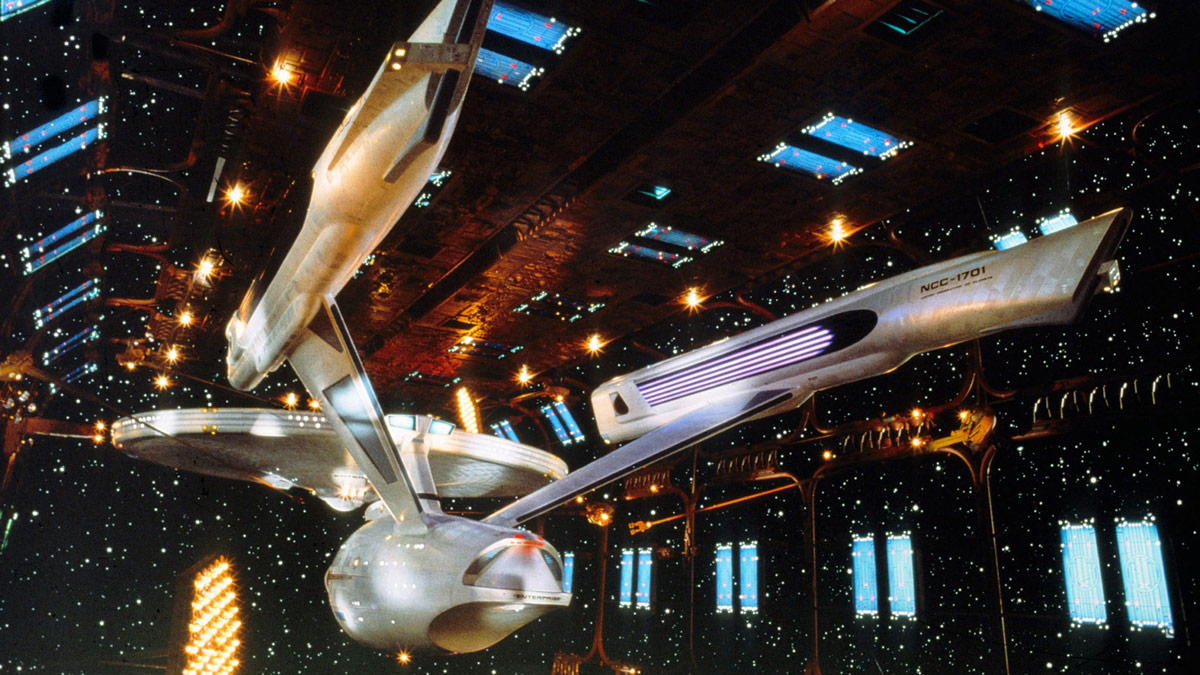
(c) Photofest / Getty Images
The struggles of the special effects staff who created the movie “Star Trek: The Motion Picture” and what they left behind Part 1
Consultation with Douglas Trumbull
Paramount had selected Douglas Trumbull as special photographic effects director (*6) before production of the theatrical version of Star Trek: The Motion Picture was announced. This is because Future General Corporation (FGC), of which he is CEO, was a subsidiary of Paramount.
FGC was founded in 1975 by Richard Yuricich (*7), Trumbull's long-time partner, as a company to develop next-generation movie systems. Even before the FGC was established, they had repeatedly conducted research into eliminating flicker from movies by using 3D movies and projecting the same film using two projectors with slightly different timings.
However, with little success, only two ideas remained that produced effective experimental results in 1974. First, it was a system that increased the shooting and projection speed from the conventional 24fps (24 frames per second) to 60fps, which would eliminate problems such as flicker and strobing that are unique to film. At the same time, by changing the film size to 70mm 5P (perforation), the resolution of the screen can be increased. They named it ``SHOWSCAN'' (*8), gathered Paramount executives, and held a demonstration at a large theater. At this time, Paramount president Frank Yablans said, ``We would be idiots if we didn't make movies using this method,'' and G+W and Paramount agreed to establish FGC as a research facility for the practical use of ShowScan.・Pictures fully invested.
The second idea that Trumbull and his colleagues came up with was a system called ``Cineride,'' which used hydraulic actuators to shake the entire theater in time with the images. This has the same basic structure as ``Star Tours: The Adventures Continue'' currently operated at Tokyo Disneyland, and is also the originator of 4DX. A prototype system was created in 1974, and in 1976 it was exhibited at IAAPA (International Association of Amusement and Attractions), an exhibition for the amusement park industry, where it won the Best New Idea Award.
"Close Encounters of the Third Kind" preview
Trumbull and his colleagues were so obsessed with making showscan and cineride practical for theaters that they had lost all interest in regular movie visual effects. For this reason, with the exception of `` Close Encounters of the Third Kind of the Third Kind'' (1977), he also declined requests for ` `Star Wars, '' and for the same reason, he also refused work on ``Star Trek: The Motion Picture.''
Katzenberg had also prepared the idea of having Trumbull take over as director, but this idea was rejected due to a lot of opposition within the company. The reason for this was that Yablans, who had been an enthusiastic supporter of Showscan, resigned as president of Paramount in November 1974, and Eisner, who became the new president and COO, had a hard time getting along with Trumbull.
*6 The meaning is the same as VFX supervisor, but at this time the British term visual effects had not yet become widespread in the United States.
*7 Richard Yuricich said,ben hur” (59), “poseidon adventureHe is the younger brother of Matthew Yuricich, who is famous as a matte painter such as '(72). After The Graduate from high school, he joined an animation company and learned the basics of optical compositing and motion control. after that"2001: A Space OdysseyAfter working as an assistant cameraman for commercials, he joined Trumbull Film Effects. By the way, Matthew also participated in the matte painting for Star Trek: The Motion Picture .
*8 The first time I saw a showscan was in ``Let's Go! Pal'' at the ``Toshiba Pavilion'' at the Science Expo Tsukuba '85, and I was dismayed by the fact that I could even see the brush marks on the miniatures. After that, I watched some showscan movies, and they are very effective for documentaries, etc., and the flow of water in particular looks real. However, this excessive reality became a disaster, and in dramas, sets looked like sets, wigs looked like wigs, and makeup looked like makeup, highlighting the unnaturalness of the creations. Trumbull withdrew from this field in 1989.
Trumbull then began working on high frame rate (HFR) technology again in 2010 under the name ``Shawscan Digital,'' which is now known as ``MAGI'' (pronounced ma-jay). Basically, it creates 48fps, 60fps, and 120fps images based on 4K, 120fps digital 3D images. The first film to use this technique was the short film UFOTOG (14), directed by Trumbull.
Director Ang Lee asked Trumbull for advice when shooting `` Billy Lynn '' (2016) and `` Gemini Man '' (2019) in 3D at 120 frames per second.
*9 Trumbull easily accepted the job on Close Encounters of the Third Kind. Director Spielberg said, ``He really liked my script and ideas,'' but since Columbia is the distributor of ``Close Encounters of the Third Kind'', a lawyer was involved in the negotiations with Paramount. was necessary. Trumbull has not explicitly stated why he was so active in this project, but he did have experience participating in the Flying Saucer (UFO) convention held in Giant Rock, California in 1969. Recently, he has been spending a large amount of his own money on UFO hunting , and it seems that he was originally interested in UFO incidents.

